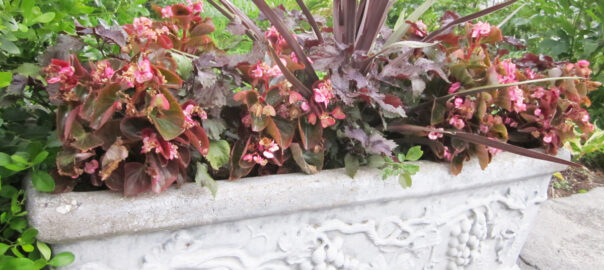
The recent sweltering days of extreme heat accompanied by a record-setting severe drought has made this year’s gardening a challenge for sure. Temperatures in the high 90s along with watering restrictions have resulted in sad-looking perennial plants, especially our daylilies, ferns, creeping phlox, and hostas.
There were days when some of our rhododendrons, azaleas, and hydrangeas looked like they were going to literally “pass out” as their leaves curled up and drooped.
Amazingly, weeds are looking good, especially the invasive goutweed ‘Aegopodium podagraria’ a creeping herbaceous perennial plant also known as Bishop’s Weed.
Rabbits are seemingly everywhere, nibbling and “pruning” whatever they can reach. A couple of groundhogs dug a hole in the middle of a hosta clump, something we’ve never seen before in the 50+ years we’ve been gardening at this location.
We have only one hummingbird feeder this year since we want to want to make sure the homemade nectar is fresh and available. It’s located just outside one of our kitchen windows where it’s shady. It’s fun to watch the precious little birds play and eat, then fly away. Even the bees are availing themselves of the nectar.
Two birdbaths located under cherry trees keep other birds hydrated, such as the blue jays, robins and cardinals. Thankfully, our cellar de-humidifier needs to be emptied several times a day, providing the needed water.
A pleasant surprise has been the proliferation of the ‘Perilla frutescens’ or shiso plants. Also known as wild Japanese basil, we are told that it has been used as a salad ingredient, and for its seed oil, for literally thousands of years.
I forget how I first learned about shiso. When allowed to flower in late summer/early fall, they will dry up and ultimately self-seed. The following spring baby plants will magically appear in gardens, lawns, and even crevices in walls and walkways, wherever the winds blow the seeds. However, I don’t consider shisos weedy since they’re so easy to dig up and plant elsewhere. And they’re free!
Keeping them trimmed (and without flowers and their ultimate seeds) results in a nice colorful addition to our two front-of-the-house planters complementing a cordyline ‘Red Star’ plant in the center and several pink wax begonias.
According to the most recent Old Farmer’s Almanac, the Dog Days of Summer heat are over.
So, relief is on its way!

